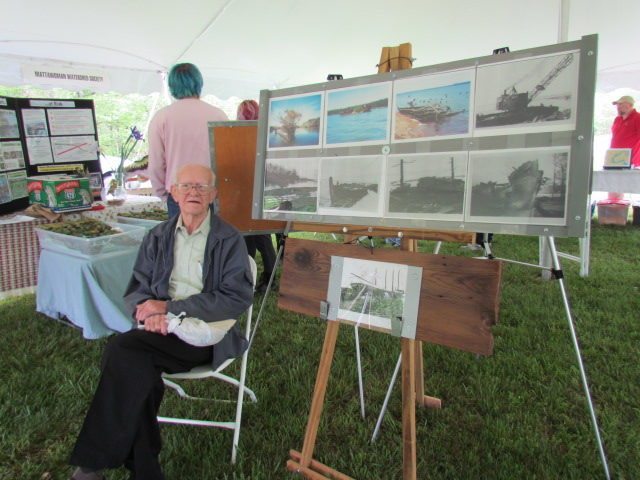
By Molly Pickel
 This month, people across the country are commemorating the one hundredth anniversary of the United States’ entrance into World War I. The path to war began in the sea, as repeated German submarine attacks on merchant and passenger vessels angered Americans. By April 1917, submarine attacks and other conflicts contributed to the decision to declare war. In order to fight this war, the United States established the Emergency Fleet Corporation, which quickly ramped up American shipbuilding. While many ships carried troops to Europe, some remained incomplete or unused at the conclusion of the war. Over one hundred of these vessels, known as the Ghost Fleet, were intentionally sunk in Mallows Bay on the Potomac River and remain as important reminders of this moment in American History. Last weekend, Charles County, Maryland and community organizations hosted a WWI Centennial Commemoration in April to highlight the historical and ecological significance of the Mallows Bay shipwrecks.
This month, people across the country are commemorating the one hundredth anniversary of the United States’ entrance into World War I. The path to war began in the sea, as repeated German submarine attacks on merchant and passenger vessels angered Americans. By April 1917, submarine attacks and other conflicts contributed to the decision to declare war. In order to fight this war, the United States established the Emergency Fleet Corporation, which quickly ramped up American shipbuilding. While many ships carried troops to Europe, some remained incomplete or unused at the conclusion of the war. Over one hundred of these vessels, known as the Ghost Fleet, were intentionally sunk in Mallows Bay on the Potomac River and remain as important reminders of this moment in American History. Last weekend, Charles County, Maryland and community organizations hosted a WWI Centennial Commemoration in April to highlight the historical and ecological significance of the Mallows Bay shipwrecks.
The wrecks in Mallows Bay have been the site of maritime archaeology research, work the Centennial Commemoration highlighted last weekend. At an art exhibit featuring Mallows Bay, Don Shomette, the author of The Ghost Fleet of Mallows Bay, gave a lecture about the process of understanding this unique piece of WWI maritime heritage. The Institute of Maritime History demonstrated how maritime archaeologists work by setting up a mock shipwreck on the grass and asking visitors to take measurements, then create a map of the area based on those measurements. This activity taught participants the kind of information about the layout of a ship that can be gleaned from this research and how difficult it can be to map something that is hard to access.

(Credit: Isabel Mack) The Institute of Maritime History demonstrated how maritime archaeologists map artifacts underwater with a mock shipwreck of artifacts laid out on the grass. Participants marked the location of objects and represented the mock shipwreck on graph paper.

(Credit: Haven Carlson)
Jim and Ryan measure electrical conductance to gauge salinity. In this demonstration, participants compared samples from Mallows Bay and from Marshall Hall, about 19 miles upstream. The conductance at Mallows Bay was almost twice that of Marshall Hall.
A century later, the Ghost Fleet of Mallows Bay not only shows an important part of maritime history, but also provides the foundation for a rich ecosystem including endangered and threatened wildlife, such as bald eagles, herons, and osprey, river otters and beaver, and numerous fish species. Plants grow on the surface of the wrecks, creating boat-shaped islands and unique habitats. Last weekend, the Mattawoman Watershed Society offered children and adults the opportunity to better understand this habitat by demonstrating how to test the level of salt in the water, which is influenced by ocean water from downstream and freshwater from upstream. In addition, their watershed model showed how forested land can help filter water and decrease the amount of pollution entering the rivers. These activities emphasize the importance of Mallows Bay as part of a broader, interconnected watershed.
Many of the community groups present at the WWI Centennial Commemoration have been active in supporting the proposal for Mallows Bay – Potomac River to become a national marine sanctuary. The site was nominated with the support of a diverse coalition that included elected officials, Native Americans, businesses, and museums. The designation as a national marine sanctuary will ensure the preservation of historically significant wrecks, and also protect habitats that the wrecks have formed, promote research, and increase education and outreach.
Learn more about Mallows Bay by taking a virtual tour, created by the Chesapeake Conservancy, and sign our letter to support funding for America’s national marine sanctuaries.
